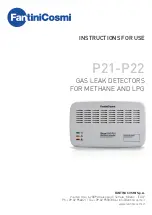
CS250
V. 01 – 21/09/2015
8
©Velleman nv
3.
Adjust the search coil so that the flat part faces upwards.
4.
Evenly sweep an iron nail 10 to 12 cm above the search coil. The detector will emit a low tone when
detecting the sample, the target indicator pointing the corresponding symbol. The depth indicator
displays the approximate corresponding value. Repeat the above test with a silver coin. Different
metals generate different tones.
generated tone
target type
target info
low
IRON
the target is probably iron, foil or a bottle cap
5¢
the target is probably nickel or a small gold
object
medium
P-TAB
the target is probably an aluminium pull tab or a
small gold object
Zn
the target is probably a zinc alloy, copper or a
medium-sized gold object
high
1¢
the target is probably zinc or a large gold object
25¢
the target is probably brass or silver
Remark:
In DISC or NOTCH mode, the detector sounds a medium or high tone when detecting
highly oxidized iron.
About 15 % of gold rings cause the detector to sound a medium tone.
10.4
Outdoor Testing and Practice
Pinpointing
Accurate pinpointing takes practice and is best accomplished by cross-sweeping the target area.
1.
Once a buried target is located and indicated by a
good tone response, continue sweeping the coil over
the target in a narrowing side-to-side motion.
2.
Take visual note of the place on the ground where
the metal detector emits a tone.
3.
Stop the coil directly over this spot on the ground.
4.
Now move the coil a few times straight forward and
straight back.
5.
Again, take visual note of the spot on the ground
where the metal detector emits a tone.
6.
If needed, cross-sweep the target in an X-pattern at
different angles to zero in on the exact spot.
Coil Movement
When sweeping the coil, be careful to keep it level to the ground at
about 1 to 1.5 cm from the surface. Never swing the coil like a
pendulum. Doing so will cause false readings. When searching,
sweep the coil from side to side.
Swing the search coil slowly, overlapping each sweep as you move
forward. It is important to sweep the coil at a consistent speed
over the ground as you search. After identifying a target, the
sweeping technique can help in identifying both the location and
the nature of the target. If you encounter a weak signal, try
moving the coil in short and rapid sweeps over the target zone.
Most worthwhile objects will respond with a repeatable tone. If the
signal does not repeat after sweeping the coil directly over the
suspected target, it is more than likely trash.
Crossing the target zone with multiple intersecting sweeps at multiple angles is another way to verify the
repeatability of the signal and the potential of the buried object. To use this method, walk around the
target area in a circle, sweeping the coil across the target repeatedly, every 30 to 40 degrees of the
circle, about ten different angles as you walk completely around the target. If a high-tone target
completely disappears from detection at a given angle, chances are that you are detecting oxidized
Содержание CS250
Страница 2: ...CS250 V 01 21 09 2015 2 Velleman nv...
Страница 3: ...CS250 V 01 21 09 2015 3 Velleman nv A B...









































